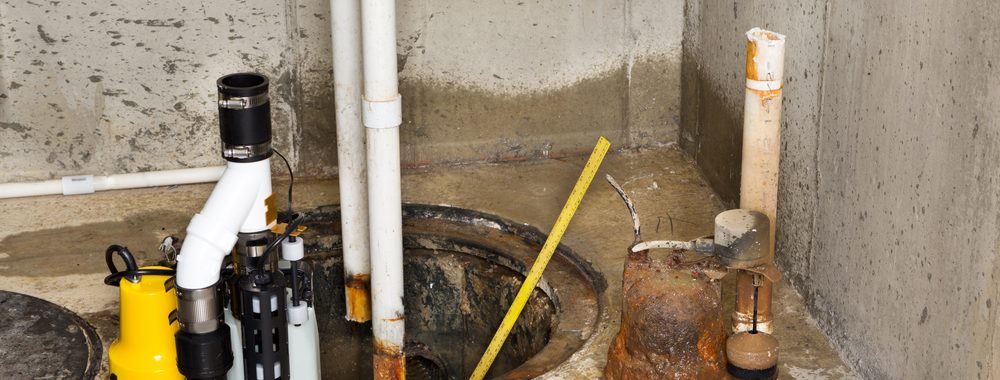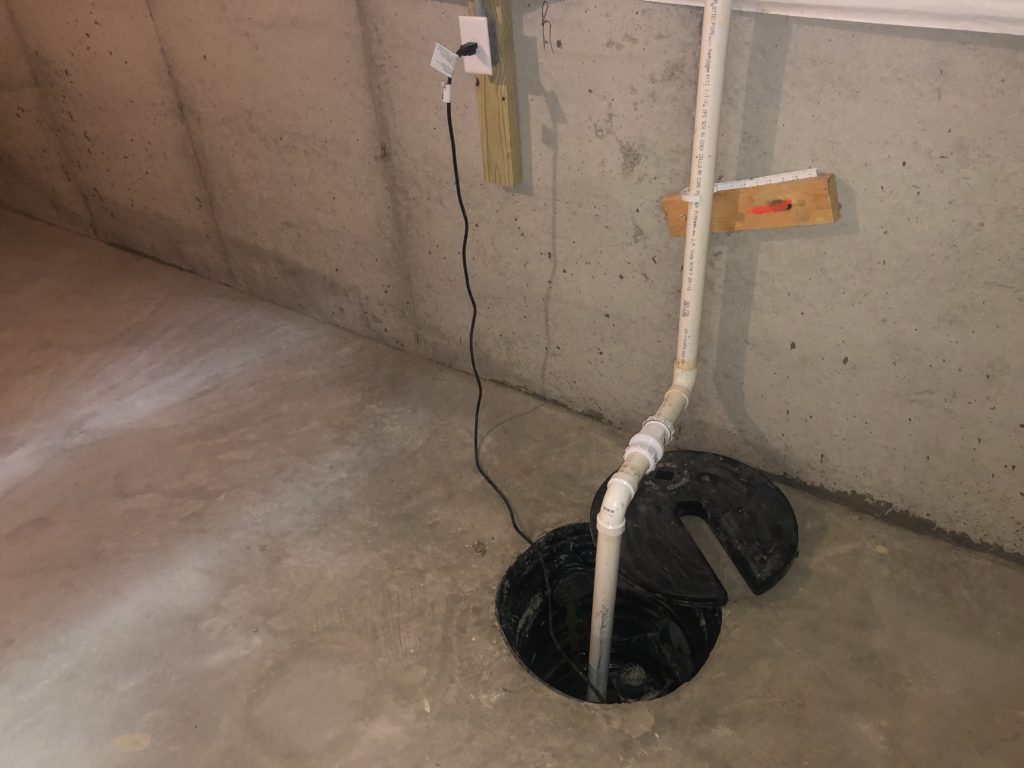My Comprehensive Guide to Cleaning a Sump Pump
My Comprehensive Guide to Cleaning a Sump Pump
Blog Article
Presented here below you can find a good deal of sensible insight when it comes to Keep Your Sump Pump Clean, It'll Keep You Dry.

Sump pumps are crucial parts in lots of homes, specifically in locations prone to flooding or too much wetness. They help stop water damage by efficiently getting rid of excess water from cellars or crawl spaces. Nevertheless, like any other device, sump pumps require regular upkeep to ensure they function efficiently when needed the most. Cleaning your sump pump is an important part of its upkeep, and understanding exactly how to do it properly can conserve you from costly repairs and potential calamities.
Introduction
Keeping a clean sump pump is essential for its correct performance and longevity. Neglecting this crucial job can cause blockages, breakdowns, and inevitably, water damage to your residential property. For that reason, discovering how to cleanse a sump pump is critical for property owners who count on these gadgets to maintain their cellars dry and secured.
Indicators of a Dirty Sump Pump
Knowing when your sump pump requires cleaning is vital for avoiding potential malfunctions. Some typical indicators that indicate a filthy sump pump include weird sounds during procedure, reduced water flow, and visible debris in the pit. If you see any of these symptoms, it's essential to cleanse your sump pump immediately to stay clear of any more problems.
Getting ready for Cleansing
Before you begin cleansing your sump pump, it's vital to take some safety and security precautions. Beginning by shutting down the power to the pump to stay clear of any type of electrical accidents. Furthermore, put on suitable protective gear, such as gloves and goggles, to shield on your own from dirt, debris, and possible pathogens.
Comprehending the Sump Pump
Before diving into the cleansing process, it's essential to have a fundamental understanding of just how a sump pump works. Typically mounted in a pit or basin listed below the basement floor, a sump pump contains several crucial elements, consisting of a pump, a float button, and a discharge pipe. When water collects in the pit, the float switch turns on the pump, which after that pumps the water out with the discharge pipe, away from the structure's structure.
Detailed Guide to Cleansing a Sump Pump
Shutting Off the Power
Begin by disconnecting the power supply to the sump pump to prevent any kind of mishaps while cleaning.
Checking for Proper Performance
Before reinstalling the pump, do a quick examination to make certain that the float switch activates the pump properly. Put some water into the sump pit and observe the pump's procedure. If whatever is working appropriately, you can reconstruct the pump and reconnect the power supply.
Eliminating Debris and Dirt
Use a bucket or an inside story to remove any type of noticeable particles, dust, or debris from the sump pit. Dispose of the particles correctly to prevent it from obstructing the pump or the discharge pipeline.
Cleaning the Pump and Drift Change
As soon as the pit is clear of particles, meticulously get rid of the pump from the pit. Inspect the pump and the float button for any signs of damage or wear. Utilize a soft brush or cloth to clean up the surface areas and get rid of any kind of built up grime.
Purging the System
After cleansing the pump and float button, flush the sump pit with clean water to remove any kind of staying dust or sediment. This will certainly help ensure that the pump runs smoothly and efficiently.
Upkeep Tips to Maintain Your Sump Pump Clean
In addition to regular cleaning, there are a number of upkeep suggestions you can comply with to maintain your sump pump in optimal condition:
Conclusion
Cleaning your sump pump is a vital facet of its upkeep and ensures that it operates effectively when you require it one of the most. By adhering to the actions laid out in this guide and incorporating normal upkeep into your routine, you can extend the life-span of your sump pump and shield your home from water damage.
6 STEPS ON HOW TO CLEAN A SUMP PUMP PROPERLY
UNDERSTANDING SUMP PUMPS
Your sump pump plays a crucial role in protecting your home by managing and removing excess water. It primarily functions as a “shield”, guarding your basement against the damaging effects of water accumulation. The pump is housed in a sump pit in the lowest part of your basement, and its job is to pump out any water that collects there.
During heavy rainfalls or when snow melts rapidly, water can infiltrate your basement, posing potential risks like flooding, structural damage, and harmful mold growth. Here, the sump pump springs into action, pumping out the intruding water and directing it away from your home.
SAFETY FIRST
Before cleaning, remember to prioritize safety. Disconnect the sump pump from the power source to prevent any accidental electric shocks. Also, wear sturdy gloves to protect your hands from any sharp or dirty components within the pump.
REMOVE THE SUMP PUMP
After ensuring your safety, the next step is to remove the sump pump from its pit. Doing this might require careful maneuvering as you don’t want to damage any pump components. Once removed, clean the sump pit to remove any accumulated debris or sludge.
INSPECT THE PUMP
Inspect the pump for any visible signs of wear or damage. Check the power cord, float switch, and impeller housing. If any components look worn out or damaged, consider replacing them to ensure optimal performance.
CLEAN THE PUMP
Thoroughly clean the pump with warm, soapy water. Make sure to rid it of any dirt, gravel, or other debris that might impede its performance. You can use a toothbrush to clean the small, hard-to-reach parts of the pump.
REINSTALL THE SUMP PUMP
Reinstall the pump into the sump pit Make sure it’s positioned correctly to remove the water effectively Once it’s back in place, reconnect it to the power source TEST THE PUMP
Finally, pour some water into the pit to ensure the pump works correctly. It should start automatically and begin pumping out the water; if it doesn’t, check the power source and the positioning of the pump.
Remember, while cleaning your sump pump is an essential part of home maintenance, hiring a professional plumber for a thorough inspection and cleaning at least once a year is also important. This will ensure that your pump is in optimal condition, ready to protect your home from potential water damage.
BEST PRACTICES FOR CLEANING SUMP PUMP DISCHARGE PIPES
Regular Inspection: Regularly inspect your discharge pipes, especially during heavy rainfall or snowmelt periods. Look for any signs of blockage or damage. Early detection of problems can prevent serious issues down the line. Periodic Cleaning: Over time, sediment and debris can accumulate in the discharge pipes, impeding the flow of water. Regular cleaning helps keep the pipes clear and functioning efficiently. You can use a high-pressure water jet to effectively clean the pipes. Insulation During Winter: In colder climates, discharge pipes can freeze, blocking the outflow of water. Protect your discharge pipes from freezing temperatures by insulating them with foam pipe insulation. This will ensure the sump pump can continue to discharge water even in freezing conditions. Proper Positioning: The discharge pipe should be positioned to direct water away from your home’s foundation. Improper positioning can lead to water seeping back into the basement. Ensure the pipe is long enough and angled correctly. Installation of a Check Valve: A check valve prevents water from flowing back into your sump pit after the pump has pushed it out. Installing a check valve helps maintain the efficiency of your sump pump and reduces the risk of flooding. Minimize Pipe Turns: Every curve or turn in the discharge pipe can decrease the efficiency of water flow. By minimizing turns and bends in your discharge pipe, you can increase the efficiency of your sump pump. https://www.fullspeedplumbing.com/how-to-clean-a-sump-pump-properly9999/

We hope you enjoyed our topic on How To Effectively Clean A Sump Pump. Thanks for finding the time to read through our posting. Feel free to pause to share this content if you liked it. Kudos for being here. Kindly check up our website back soon.
Free Estimate Report this page